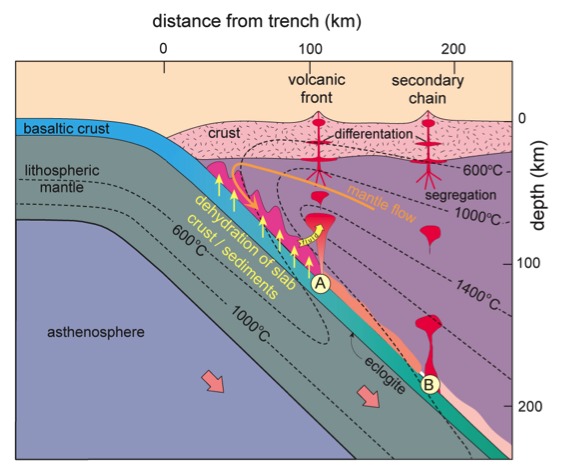Convergent Landforms - Claire Hana Ryan
Item
-
Title
-
Convergent Landforms - Claire Hana Ryan
-
Description
-
Landforms that occur in convergent margins result from subducting denser, older tectonic plates beneath a younger and less dense tectonic plate. This can occur between both oceanic-oceanic convergent margins, as well as oceanic-continental convergent margins. The convergent margins that are currently being compared, comprise one oceanic-oceanic convergent margins(Solomon Island Arc), and two oceanic-continental margin (Trans-Mexican Volcanic belt and the Andean Arc). The landforms that result between the two types of convergence differ, but also have similarities. The Trans-Mexican Volcanic belt and Andean Arc has caused stratovolcanoes to occur along the continental plate, due to the oceanic plate being older and denser and therefor subducting. This has resulted in diverse magma compositions in the Trans-Mexican Volcanic belt and the Andean Arc, but dominantly rocks of calc-alkaline composition. Within the Andean Arc, it is likely that the resulting rocks that occur within the region are andesitic. This is likely due to the increased silicic composition of the continental plate that the magma assimilates through from the mantle. The other convergent margin system, Solomon Island Arc, is oceanic-oceanic convergence, still resulting in an older and denser plate to become subducted. This subducting plate also results in stratovolcanoes, however the composition of the resulting magma is often less rich in silica and calcium elements due to assimilation through another oceanic plate. This results in island arc building that is considered to be MORB like in composition, or rich in basaltic rocks.
Picture from
Winter, J. D. (n.d.). Igneous and Metamorphic Petrology Class Material.
Retrieved May 6, 2015, from https://www.whitman.edu/geology/winter/
JDW_PetClass.htm
-
Creator
-
Claire Kojaian
-
Mediator
-
Tamara Carley
carleyt@lafayette.edu

